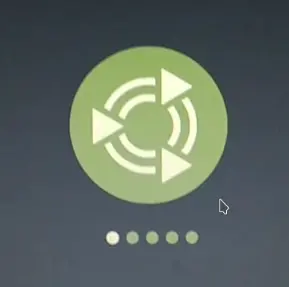Customizing Splash Screen/Logo in Linux
This document provides a step-by-step guide to changing the boot splash screen using Plymouth, a graphical boot animation and logger used in many Linux distributions.

Requirements
Ensure the following packages are installed:
plymouth
plymouth-themes
On Debian/Ubuntu-based systems:
sudo apt update
sudo apt install plymouth plymouth-themes
Set plymouth theme using command
Downloaded theme should be copied in
/usr/share/plymouth/themes/directory.After you have the Plymouth theme installed into the directory, you will need to add the theme to the default.plymouth. To add the theme you add it like so:
sudo update-alternatives --install /usr/share/plymouth/themes/default.plymouth default.plymouth /usr/share/plymouth/themes/space-sunrise/space-sunrise.plymouth 100
Note
The command of plymouth-set-default-theme is a Debian command and not used in Ubuntu.
Ubuntu uses sudo update-alternatives --config default.plymouth to set the default Plymouth theme.
Then you run the –config option so that you can choose the new Plymouth theme:
sudo update-alternatives --config default.plymouth
Below output, you can show :
vicharak@vicharak:~$ sudo update-alternatives --config default.plymouth
There are 5 choices for the alternative default.plymouth (providing /usr/share/plymouth/themes/default.plymouth).
Selection Path Priority Status
------------------------------------------------------------
0 /usr/share/plymouth/themes/ubuntu-mate-logo/ubuntu-mate-logo.plymouth 150 auto mode
1 /usr/share/plymouth/themes/bgrt/bgrt.plymouth 110 manual mode
2 /usr/share/plymouth/themes/spinner/spinner.plymouth 70 manual mode
3 /usr/share/plymouth/themes/ubuntu-mate-logo/ubuntu-mate-logo-scale-2.plymouth 149 manual mode
4 /usr/share/plymouth/themes/ubuntu-mate-logo/ubuntu-mate-logo.plymouth 150 manual mode
* 5 /usr/share/plymouth/themes/vortex-ubuntu/vortex-ubuntu.plymouth 100 manual mode
Press <enter> to keep the current choice[*], or type selection number:
* determines which theme will be applied on next boot.
You can preview a theme with:
sudo plymouthd
sudo plymouth --show-splash
sudo plymouth --quit
You may require to restart lightdm service to use GUI interface again.
sudo systemctl restart lightdm.service
To set a new theme (example: vortex):
sudo update-initramfs -u
Creating a Custom Theme
Create a new directory under
/usr/share/plymouth/themes/your-theme-name/Add the following files:
your-theme-name.plymouth:[Plymouth Theme] Name=Your Theme Name Description=Custom Splash ModuleName=script [script] ImageDir=/usr/share/plymouth/themes/your-theme-name ScriptFile=/usr/share/plymouth/themes/your-theme-name/script.luascript.lua(minimal example):-- Simple splash screen image = Image("splash.png") screen_width, screen_height = Window.GetSize() image:Move((screen_width - image:GetWidth()) / 2, (screen_height - image:GetHeight()) / 2) image:Show()splash.png: Your custom splash image.
Register custom theme:
sudo update-alternatives --install /usr/share/plymouth/themes/default.plymouth default.plymouth /usr/share/plymouth/themes/your-theme-name/your-theme-name.plymouth 100To Set theme:
sudo update-alternatives --config default.plymouthTo apply in next boot, User need to update initramfs :
sudo update-initramfs -u
Debugging Plymouth Issues
Check logs for boot messages:
journalctl -b | grep plymouth
Make sure kernel command line has splash and quiet:
Notes
Not all distributions support Plymouth out-of-the-box.
Image formats: PNG recommended.
Theme script (Lua) can be extended with animations, text, and progress indicators.
References
Plymouth GitHub: Plymouth
Theme Examples:
/usr/share/plymouth/themes/